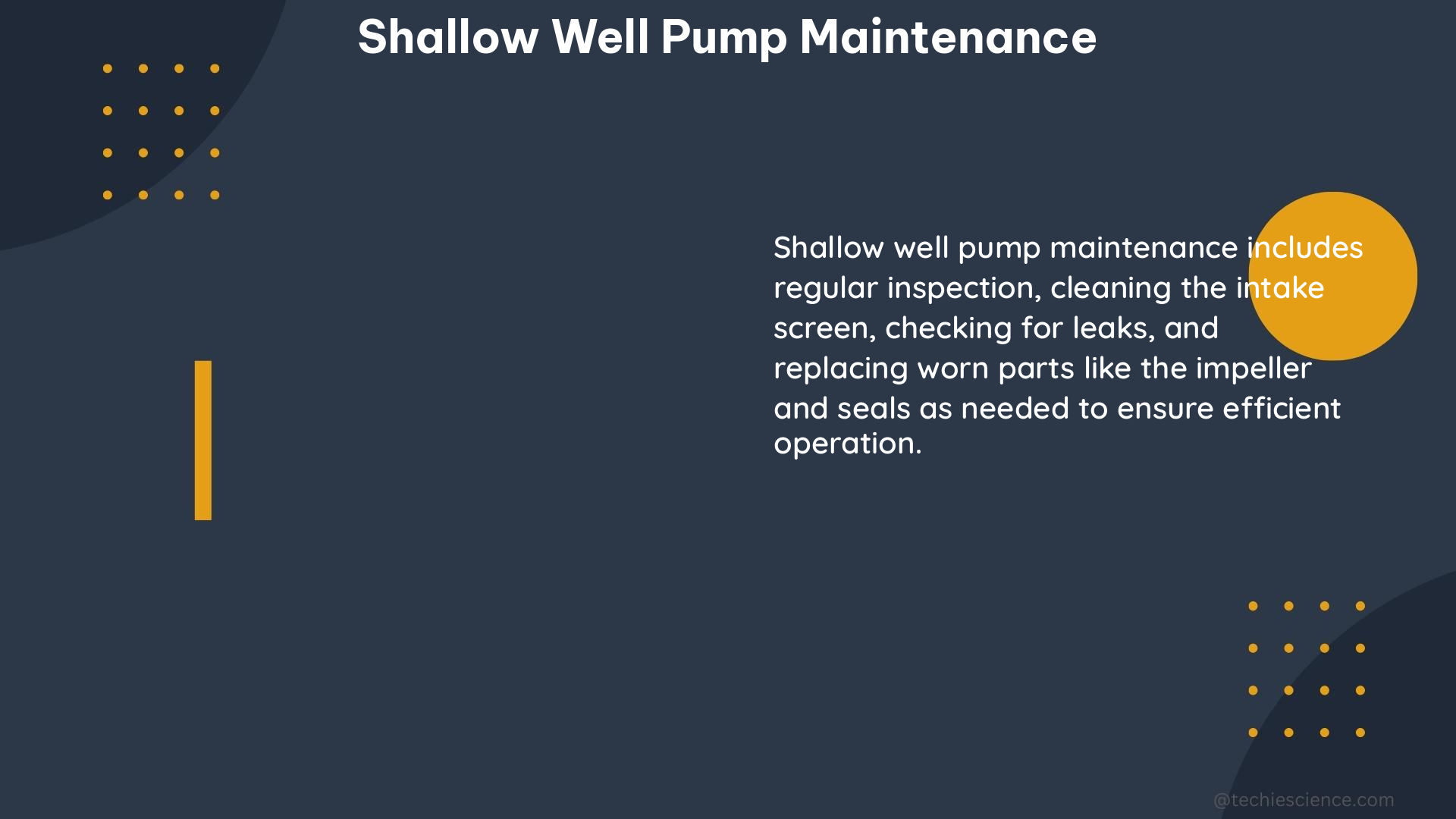Maintaining a shallow well pump is crucial to ensure its optimal performance and longevity. This comprehensive guide will provide you with detailed, technical, and actionable insights into the various aspects of shallow well pump maintenance, empowering you to take control of your water supply and prevent costly breakdowns.
Measuring Pump Performance
Pumping Rate
The pumping rate, measured in gallons per minute (GPM), is a crucial metric to monitor. Regularly measuring the pumping rate can help you detect any decreases, which could indicate a problem with the pump or the well. A typical shallow well pump can deliver between 5-20 GPM, depending on the well depth, pump size, and aquifer characteristics.
Drawdown
Drawdown is the decrease in the water level in the well when the pump is operating. Monitoring the drawdown can provide valuable insights into the well’s performance. A significant increase in drawdown could indicate a problem with the pump or the well, such as a decrease in the aquifer’s water supply or a clogged well screen.
Specific Capacity
Specific capacity is the pumping rate divided by the drawdown, and it is a measure of the efficiency of the pump and the well. A decrease in specific capacity could indicate a problem with the pump or the well, such as a decrease in the aquifer’s permeability or a buildup of sediment in the well.
Water Level
Regularly measuring the water level in the well can help detect any decreases, which could indicate a problem with the well or the aquifer. This information can be used to adjust the pump’s operation or to identify the need for well maintenance or rehabilitation.
Sediment Content
Monitoring the sediment content of the water can help detect any increases, which could indicate a problem with the well or the aquifer, such as a collapse of the well casing or a change in the aquifer’s geology.
Electrical and Mechanical Maintenance

Pressure Switch Settings
The pressure switch controls when the pump turns on and off. Regularly checking the settings can help ensure the pump is not cycling on and off too frequently, which can shorten its lifespan. The typical pressure switch settings for a shallow well pump are 20-40 PSI.
Power Consumption
Regularly checking the power consumption of the pump can help detect any increases, which could indicate a problem with the pump, such as a worn impeller or a failing motor.
Running Time
Monitoring the running time of the pump can help detect any increases, which could indicate a problem with the pump or the well, such as a decrease in the aquifer’s water supply or a clogged well screen.
Visual Inspection
Regularly inspecting the pump and the well for any signs of wear or damage can help detect problems early, such as a worn impeller, a damaged well casing, or a buildup of sediment in the well.
Manufacturer’s Recommendations
Following the manufacturer’s recommendations for maintenance and servicing is crucial to ensure the pump lasts as long as possible. This may include regular cleaning, lubrication, and replacement of wear parts, such as the impeller, seals, and bearings.
Troubleshooting and Repair
Pump Failure Diagnosis
If the pump is not functioning properly, it’s important to diagnose the issue. Common problems include a worn impeller, a failed motor, a clogged well screen, or a decrease in the aquifer’s water supply. Using the performance metrics mentioned earlier can help identify the root cause of the problem.
Pump Replacement
If the pump is beyond repair, it may need to be replaced. When selecting a new pump, consider the well depth, the required flow rate, and the power source (electric or solar). Ensure the new pump is compatible with the existing well and electrical system.
Well Rehabilitation
In some cases, the well itself may need to be rehabilitated to improve its performance. This may involve cleaning the well screen, removing sediment buildup, or even repairing or replacing the well casing.
Conclusion
By following the comprehensive maintenance guidelines outlined in this guide, you can ensure your shallow well pump operates at peak efficiency, minimizing the risk of costly breakdowns and prolonging the life of your water supply system. Remember to regularly monitor the key performance metrics, perform routine maintenance, and address any issues promptly to keep your shallow well pump running smoothly for years to come.
References:
- Water Well Maintenance and Rehabilitation – Penn State Extension
- Use of Monitoring Wells, Portable Piezometers, and Seepage Meters to Quantify Flow Between Surface Water and Ground Water – USGS
- Diagnose and Replace a Submersible Well Pump – Instructables

The lambdageeks.com Core SME Team is a group of experienced subject matter experts from diverse scientific and technical fields including Physics, Chemistry, Technology,Electronics & Electrical Engineering, Automotive, Mechanical Engineering. Our team collaborates to create high-quality, well-researched articles on a wide range of science and technology topics for the lambdageeks.com website.
All Our Senior SME are having more than 7 Years of experience in the respective fields . They are either Working Industry Professionals or assocaited With different Universities. Refer Our Authors Page to get to know About our Core SMEs.